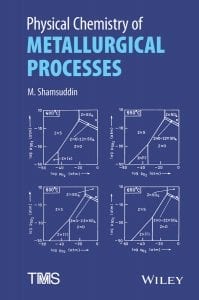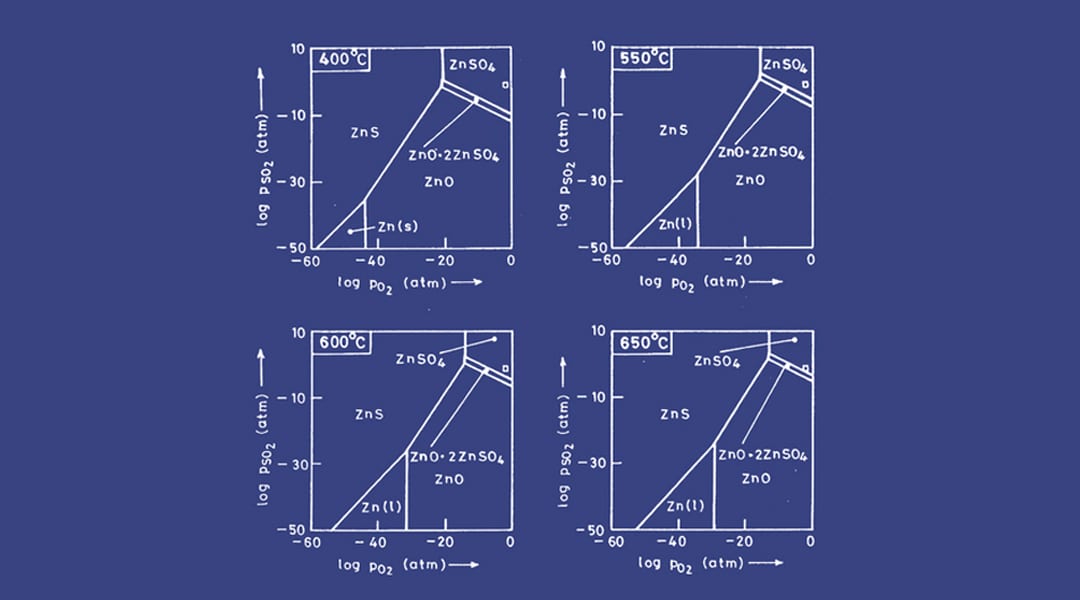
Physical Chemistry of Metallurgical Processes, M. Shamsuddin, ISBN: 978-1-119-07833-3, 624 pages, February 2016
The recent progress in materials development has required the modification of syllabi in the Metallurgical Engineering discipline. In order to introduce new courses on materials, chemical metallurgy contents have been reduced. Considering these requirements and circumstances, a newly published book discussing the physical chemistry of various steps involved in the extraction of different types of metals is an important contribution in the field of chemical metallurgy.
It is well known that the exploitation of many low grade and complex ores/minerals has been possible in recent years through a thorough understanding of slag–metal reactions with the aid of thermodynamics and reaction kinetics. Physical chemistry principles key to extraction technologies play a decisive role in the development, and improvement of processing methods. As a consequence, metallurgists and chemical engineers often face problems in selecting the appropriate technique for the treatment of the concentrate. In order to overcome such a challenging task a sound knowledge of physical chemistry of different extraction methods is extremely useful. Since the chemistry of the extraction process varies according to the nature of the metal, a comprehensive and collective treatment in one book is much desired.
This is a noteworthy book for three reasons: Firstly, it includes discussions on physicochemical principles involved in different chemical processes, such as roasting of sulfide minerals, matte smelting/converting, reduction smelting, interfacial phenomena, steelmaking, deoxidation, metal extraction with halides, refining, degassing, leaching, solution purification, precipitation, and cementation, during extraction/production of not only common metals but also rare, reactive and refractory metals by pyro- and hydrometallurgical methods.
Secondly, it provides a number of worked out examples in each chapter, which aid in the understanding of the process. The problems require imagination and critical analyses. At the same time, they also encourage readers to think creatively about the application of thermodynamic data.
Thirdly, the author has systematically summarized and presented scattered information on physicochemical aspects of metal extraction from previously published books and journal articles.
The book will undoubtedly fulfil the needs of students and teachers by providing information on the principles and methods of extraction of different metals in one place. I am confident that the book will be in demand throughout the world by universities and institutes offering courses in Metallurgy, Chemical Engineering and Technology, and also by various metallurgical and chemical research laboratories. It will be most useful to students of metallurgical engineering specializing in chemical/extractive metallurgy, but the basic principles of various unit processes involved in extraction will also be appreciated by chemical engineering students.
In addition to his long tenure at Banaras Hindu University, Professor Shamsuddin has had diversified interactions with faculty members of two premier institutions, namely the Department of Metallurgical Engineering, University of Utah, Salt Lake City and the Department of Materials Science and Engineering, Massachusetts Institute of Technology, USA, on various aspects of metal extraction, thermodynamics and kinetics. I have no reservation in stating most strongly that this book on the “Physical Chemistry of Metallurgical Processes” achieves a high standard in the field of chemical/extractive metallurgy, and will be appreciated by metallurgists and chemical engineers.
This Book Review was kindly contributed by:
H. Y. Sohn
Distinguished Professor
Departments of Metallurgical Engineering
and of Chemical Engineering
University of Utah
Salt Lake City, Utah, U.S.A.

















